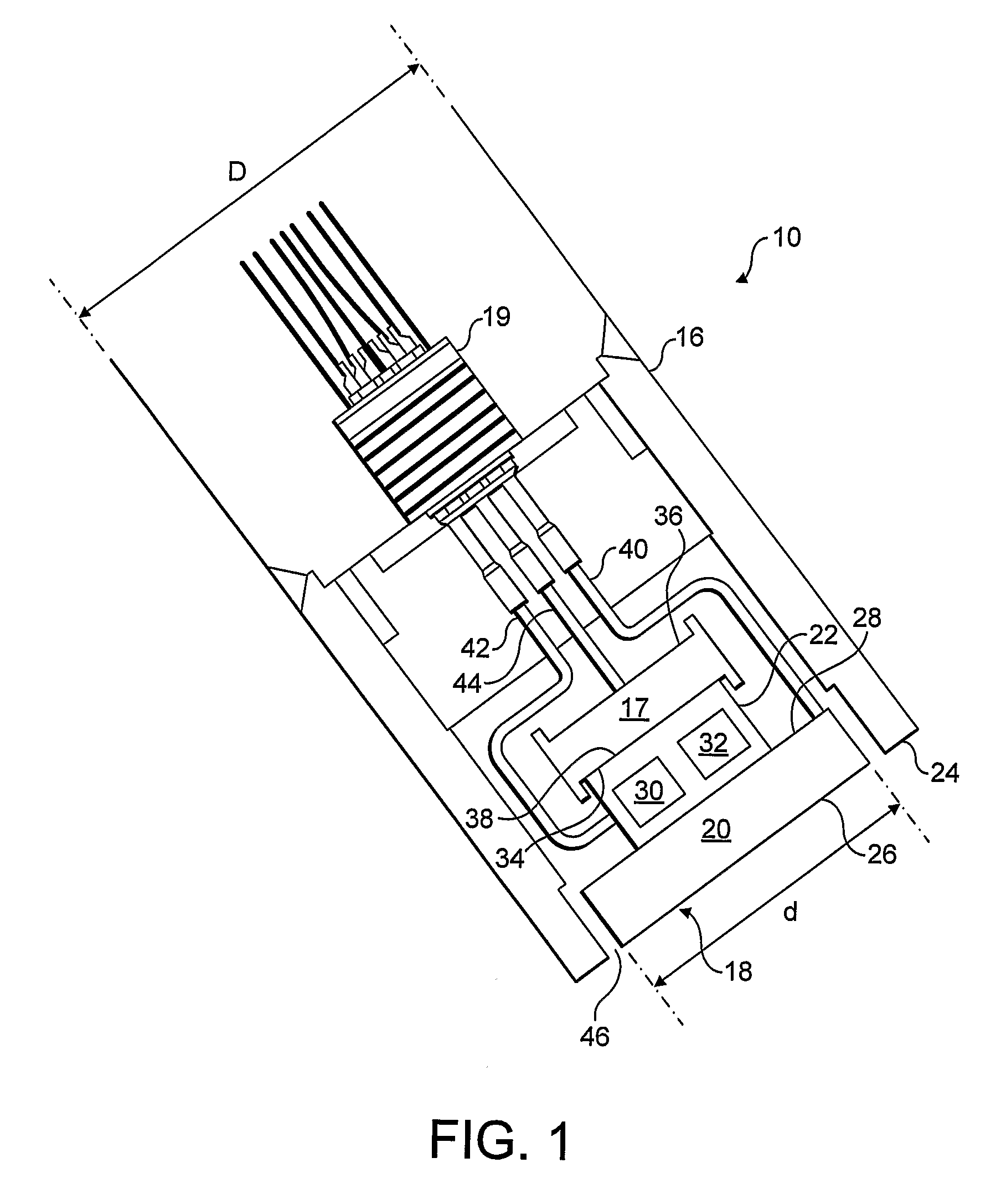Monitoring Particles in a Fluid Stream
- Summary
- Abstract
- Description
- Claims
- Application Information
AI Technical Summary
Benefits of technology
Problems solved by technology
Method used
Image
Examples
Embodiment Construction
[0043]FIG. 1 shows a section through an apparatus according to one embodiment of the present invention. In FIG. 1 the apparatus is a probe 10 for monitoring particles in a fluid stream flowing through a conduit. The probe 10 is intended to be flush mounted on an external bend of a pipe 12, as shown in FIG. 2. Thus there is an opening 14 in the pipe 12 through which the probe 10 is inserted.
[0044]Referring to FIG. 1, the probe 10 comprises a probe housing 16 within which there is a differential pressure transducer 17 and a detector element 18. An electrical connector 19 located at the back of the probe 10 provides an output from the probe 10. The detector element 18 comprises a target portion 20 and an acoustic sensing portion 22. In a preferred embodiment, the detector element 18 is made of the same material as the inside surface of the pipe 12 so that it will corrode in the same way as the pipe 12. The target portion 20, the acoustic sensing portion 22, and the transducer 17 are ea...
PUM
 Login to View More
Login to View More Abstract
Description
Claims
Application Information
 Login to View More
Login to View More - R&D
- Intellectual Property
- Life Sciences
- Materials
- Tech Scout
- Unparalleled Data Quality
- Higher Quality Content
- 60% Fewer Hallucinations
Browse by: Latest US Patents, China's latest patents, Technical Efficacy Thesaurus, Application Domain, Technology Topic, Popular Technical Reports.
© 2025 PatSnap. All rights reserved.Legal|Privacy policy|Modern Slavery Act Transparency Statement|Sitemap|About US| Contact US: help@patsnap.com



